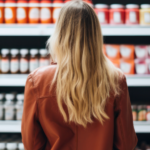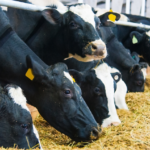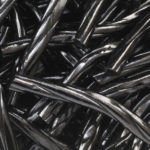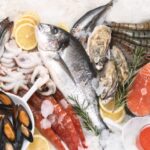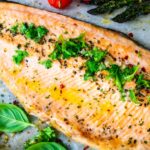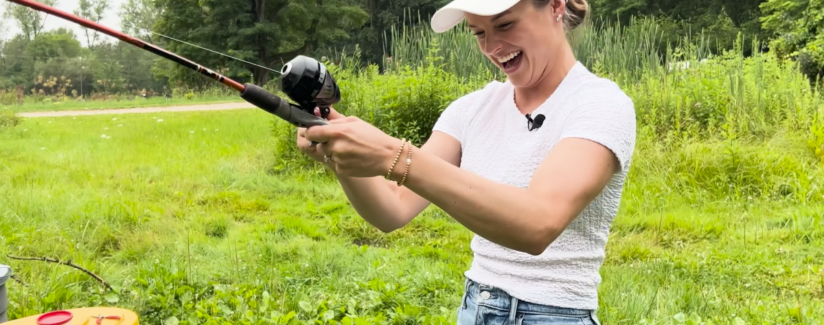
Hooked on Sustainable U.S. Aquaculture: Rushing Waters Trout Farm
Cast aside your snorkel and flippers. This deep dive into U.S. aquaculture is virtual!
Join Best Food Facts as we tour Wisconsin’s Rushing Waters rainbow trout farm with food blogger Courtney Paige with A Paige of Positivity. It’s part of our four-farm Hooked on Sustainable U.S. Aquaculture tour showcasing farmers’ commitment to sustainably raising home-grown, nutritious fish and seafood for the increasing number of Americans who crave it.
Let’s dive in at Rushing Waters to see why U.S. aquaculture is making a big splash!
Wisconsin’s premier rainbow trout farm, Rushing Waters, is nestled in the southern Kettle Moraine State Forest near Palmyra, where rainbow trout is raised in 56 natural ponds using all-natural, ecologically responsible aquaculture practices.
“We have 80 acres of land here, surrounded by the Kettle Moraine State Forest,” said Peter Fritsch, president of Rushing Waters. “Spring water is just running through these ponds and that’s where we’re raising the rainbow trout.”
Aerators run in the ponds, adding more dissolved oxygen for the fish. The water filters through gates at the bottom of the ponds. Team members rake out the gates every day, removing leaves, weeds and other debris.
Protecting the water is a high priority for Rushing Waters, which is a member of the Great Lakes Compact.
“We have more lakes than any other state in the nation,” said Fritsch. “We have to protect it. I depend on it.”
While Fritsch has many roles on the farm, his favorite is working directly with the fish and, in particular, feeding them. The diet consists of a mixture of fish meal and fish oil, but the main ingredient is soybean meal. No antibiotics or hormones are used.
“When it comes to the health and nutrition of eating fish, don’t worry about if it’s farmed or wild,” he said. “Eat fish. These are healthy fish. They’re very good for you.”
Rushing Waters buys fertilized eggs, which go to hatcheries at the farm. It takes about 15 months to raise them to full size, which is around a pound. The farm produces 250,000 pounds of rainbow trout each year, which is processed on site and distributed in the Midwest.
A unique feature at the farm is a public fishing pond that’s very popular, according to Fritsch, especially for grandparents intent on spoiling the grandkids.
“Many people have caught their first fish here,” he said. That includes Courtney.
“I caught my first fish today and I’ve never fished before!” she said.
“Sharing the farm today with Courtney has been great,” he said. “Once we get people here on the farm and they see this, all of a sudden the lightbulb goes off. It’s like, ‘this is actually well done.’”
Courtney was impressed with Rushing Waters and appreciated the opportunity to learn more about where farmed fish come from.
“I think aquaculture is incredibly important. Our farmers care about the food that they’re producing,” she said. “Any way that we can learn more about where our food comes from and also how we’re making it better for the future is key.”
Catch the other farms on the tour!
Riverence Rainbow and Steelhead Trout Farm
Want to learn more? Check out the Best Food Facts aquaculture blog series!
Is Aquaculture a Sustainable Way to Produce Fish and Seafood?
How Does Aquaculture Affect Water Supplies?
Are Farm-Raised Fish and Seafood Safe to Eat?
Are Farm-Raised Fish as Nutritious as Wild-Caught Fish?
The Hooked on Sustainable U.S. Aquaculture tour was sponsored by BestFoodFacts.org and the United Soybean Board.




















